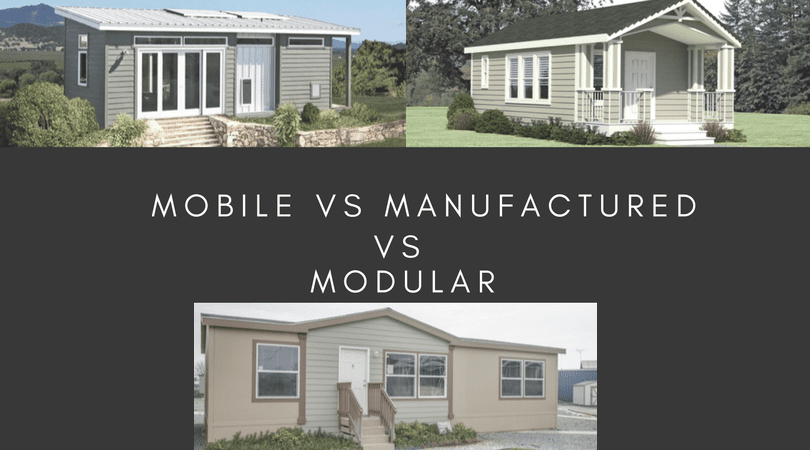When looking for flexible and affordable alternatives to traditional homes, people often choose prefabricated homes like mobile, manufactured, and modular homes. But, how do you choose one during house-hunting when you don’t know how they look, their capacity, and mobility features? Modular and manufactured look identical to on-site traditionally built homes but mobile homes have more of a factory-built appearance.
If you’ve been using these three M’s interchangeably, it’s time to know the difference to ensure you make informed decisions during purchase. So, let’s break down these terms in detail to discover what sets them apart.
Mobile Homes
Mobile homes are prefabricated houses built in a factory and then transported to rented or owned land as a whole. These homes are often referred to as campers or trailers because they were mainly built for road-tripping.
One notable feature that sets mobile homes apart from manufactured homes and modular homes is they typically have a steel chassis construction with built-in wheels, which makes them easy to transport or relocate. However, people hardly use them today because they were designed before 1967. Why? Their design and safety feature no longer meets the HUD codes and regulations governing mobile homes.
The HUD codes were established in 1976 by the federal authorities due to their concerns about the quality, durability, and safety of mobile homes. Under this code, mobile homes manufactured had to ensure any mobile home built met their standards for structural integrity, fire safety, plumbing and electrical systems, and energy efficiency. Since the HUD codes were set in 1976, it means every other mobile home you see today isn’t technically a mobile home but either a manufactured or modular home.
Modular Homes
One of the biggest differences between mobile homes and modular homes is that while their structures are built in factories like mobile homes, their construction process typically resembles that of traditional housing projects. They use similar building materials, from steel frames to wood, like modern-day houses, and require that you place them on a permanent foundation. This way, you won’t easily tell them apart from traditional houses.
Besides this, modular homes allow customization options as manufacturers create their parts in sections or modules that come in different shapes, sizes, and designs and only complete eighty to ninety percent of their construction off-site. After construction, they move the pieces and assemble the sections or modules to suit the homeowner’s customization preferences and needs.
On the other hand, modular homes do not have the mobility feature of mobile homes. Instead, they can remain in one spot for life. Yet, that does not mean you can’t relocate them. With some logistics planning and finances, homeowners can relocate their modular homes when they wish to move. Then again, the most distinctive characteristic of modular homes is that they are not subject to HUD standards. Instead, they must meet the local residential building codes, depending on the state.
Manufactured Homes
Manufactured homes are also prefabricated homes built in a factory. Hence, they are basically advanced mobile homes. Still, the difference between mobile homes and manufactured homes is once manufacturers deliver the manufactured home to the site of placement, they require a platform or structure to mount them. Manufactured homes are designed using high-quality materials and advanced building techniques, from the walls and flooring to the plumbing and electrical systems. For this reason, they meet the strict industry standards designed to ensure compliance with the HUD safety and quality regulations.
On the other hand, while modular and manufactured homes look similar to traditional housing structures, manufactured houses have a unique transportation process, unlike its counterpart. For instance, unlike modular homes, which are transported in sections and assembled on-site, manufactured homes are typically transported in their entirety. All manufacturers need to do is deliver it, and you are ready to start living in your affordable house.
Construction and Building Methods
Take note, the most significant similarity between mobile, modular, and manufactured homes is they all have a construction method. However, even these construction methods differ. modular homes are built in sections, while mobile and manufactured homes are built as a whole and then shipped to the destination. But, that’s only one difference, there’s more!
Mobile Home
Materials
- Features lightweight materials like wood, vinyl, asphalt shingles, and metal
Quality Control
- Must meet strict HUD regulations
Customization Options
- Fewer customization options, typically ranging from interior finishes to floor plans.
Advantages
- Affordable
- Easy to relocate
- Perfect for travelers
Limitations
- Limited insulation, energy efficiency, and durability.
- Most zoning regulations restrict the mobile home placement
Modular Homes
Materials
- Utilize steel, wood, and concrete materials
Quality Control
- Must meet state housing regulations
Customization Options
- Wide range of customization options from floor plans to finishes, fixtures, and architectural styles.
Advantages
- Greater design flexibility
- High-quality materials
- Faster construction timeline
Limitations
- Requires access to the building site since they come in sections and are assembled on-site.
- Most zoning laws impact their placement
Manufactured Homes
Materials
- Utilize durable materials like steel, wood, and composite
Quality Control
- Must meet strict HUD codes
Customization Options
- Wide range of customization options from floor plans to finishes, fixtures, and appliances.
Advantages
- Affordable
- Consistent quality
- Energy-efficient designs that reduce utility costs.
Limitations
- Incorporates permanent chassis that may limit design flexibility.
- Most zoning and building regulations restrict their placement.
Regulatory and Legal Considerations
When purchasing mobile, modular, or manufactured homes, it’s not just about knowing the distinctions between the physical structures. There are also legal and regulatory standards to consider.
For instance, some regions have designated zones where you can place your mobile, modular, or manufactured homes, while others may restrict their placement entirely or have specific requirements for setbacks, lot sizes, and aesthetic standards. On the other hand, you also need to obtain the necessary transportation and installation permits to place your mobile homes on land. In some areas, homeowners may also need to obtain additional permits for utilities, such as water and electricity connections.
The good news is that once you successfully place your prefabricated home on the allotted land, you can enjoy certain homeowner rights depending on the region. For instance, you may have legal protection under the Manufactured Housing Act, which safeguards against unfair practices, eviction without cause, and rent increases.
Conclusion
Mobile, modular, and manufactured homes have different structures. If you want something affordable, movable, and lightweight, choose mobile homes, if you are something close to today’s traditional buildings, opt for modular homes and if you are interested in saving cost on utility bills while enjoying broad customization options, a manufactured home can be a better option.
Nevertheless, before buying your mobile, manufactured, or modular home, get familiar with zoning and placement regulations in your district to make your experience worthwhile. Alternatively, ask your local dealers for help.

